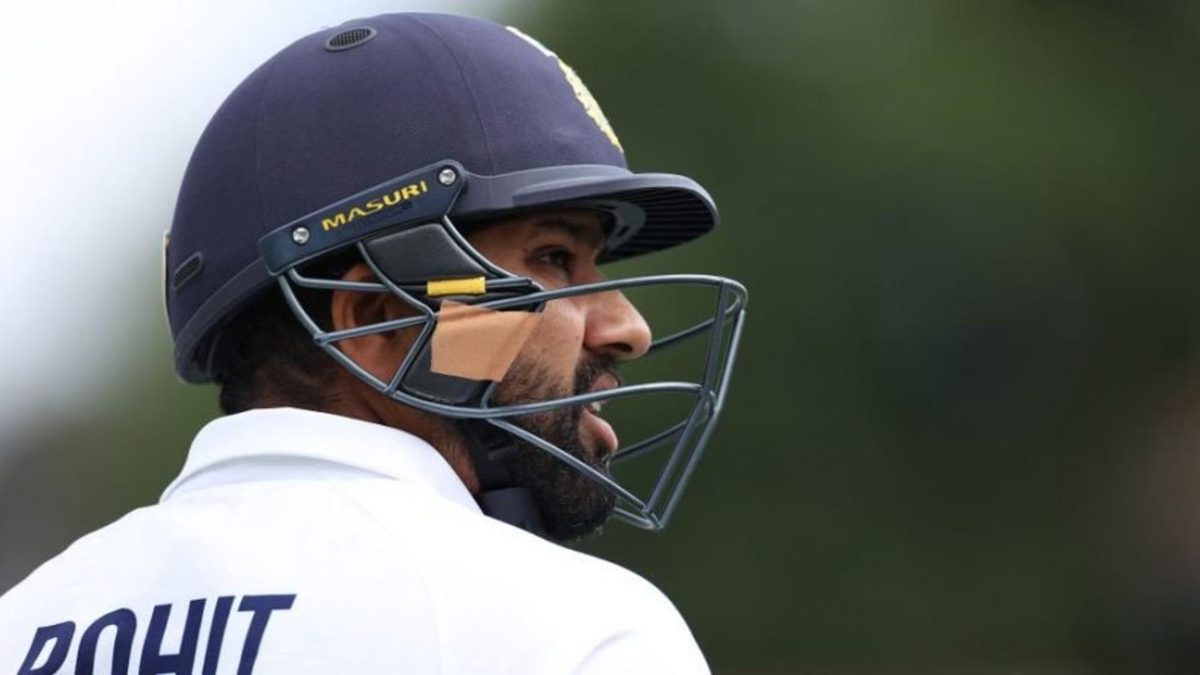
Rohit Sharma’s batting template in overseas Test matches is perfect, but the temperament once he is set and ready to capitalise has been awry, writes Rohit Sankar.
Sign up to The Cricket Draft, powered by Wisden, an all-new, free-to-play fantasy game running alongside The Hundred, to win prizes and compete with your friends.
Rohit Sharma has faced over 60 balls in six of his seven innings as Test opener overseas, but there’s only half-century and one knock of 100 or more balls to show for. On Thursday, a familiar script played itself out as Rohit, who had seen off more than 35 overs of the new ball, pulled a short delivery straight down deep square leg’s throat just before lunch on day two.
It can’t be chucked into one of those once-in-a-blue-moon brainfades either. Most of his seven innings in overseas Tests have followed a similar pattern – take the sheen off the new ball, get into a beast avatar and then tamely gift the wicket to the opposition.
Notably, in Sydney, in the second innings of the Test, with India chasing 407 to win, Rohit, eyeing a rare fourth innings hundred in an overseas Test after a fine half-century, casually pulls Pat Cummins to the deep fielder to crashland on India’s hopes.
In the first innings of that very same Test, Rohit had played out more than 26 overs for 26 runs before meekly lobbing a return catch to Josh Hazlewood against the run of play. The script followed him to England in the World Test Championship final.
After seeing off 20 overs, and barely touching anything on the good length outside off-stump, Rohit instinctively played away from his body to a Kyle Jamieson delivery and edged to third slip to be dismissed for 34. A defiant 30 in the second innings ended soon after as he played all around a fuller delivery from Tim Southee.
In short, Rohit has nailed what very few Indian openers have managed to in overseas Tests – see off the new ball – but has failed to capitalise onto the starts to do what the best openers do. Frustratingly, quite often Rohit’s downfall has been brought about by himself.
Despite the string of scores in the 30s – three in succession since landing in England – wouldn’t be an overreaction to say Rohit is one of India’s in-form batters in the format. Since 2020, only one other batsman (Rishabh Pant) has scored more runs and no one else (min. 5 Tests) has a better Test average for India.
His stature as a Test batsman has taken an offbeat path few expected it to take since turning opener. When he couldn’t cement his place in the middle-order, Rohit’s Test career seemed done and dusted. Everything from his temperament and technique against the moving ball was scrutinised and criticised. It took an inspired decision ahead of the 2019 season for Rohit’s career to kickstart into autopilot.
His Test record at home is outstanding – an average of 79.52 in 18 Tests. His Test numbers overseas fail to command as much respect at one glance – an average of 27.5 after 22 Tests. Since turning opener, though, that away average has gone up to 32, but it still isn’t where it should be.
Contrary to the Rohit of old, the present Rohit plays with soft hands, is patient outside his off-stump, and negates swing and seam with a calculated approach. What he hasn’t let go of since going into zen-mode against the new ball is the willingness to capitalise on any freebies that come his way.
On paper, the batting template is perfect for SENA countries (South Africa, England, New Zealand and Australia) where you do not want to be too bogged down, yet should be circumspect throughout. It’s what India have always struggled to consistently get from their Test openers. But, all that is when the middle-order, clumsy, solid or flippant, has held up better than the present one.
Here, India have a Virat Kohli struggling to reach the consistency so often associated with him, a Cheteshwar Pujara, who keeps getting jaffas, and a questionable vice-captain at No 5, averaging 20 in eight Tests this year. Following the thin cream in the middle-order is a thicker one in the flamboyant Rishabh Pant and the transformed Ravindra Jadeja. And then a rather questionable group of willow wielders down in the bowling group.
A day like Gabba happens ever so rarely in cricket. Relying on the lower middle-order for runs is far from ideal in an overseas Test series. Also difficult is breaking the shackles and getting out of a rough patch when two quicks with over 1,000 wickets steam in from either end. All of this puts onus on Rohit, the in-form batter, the one getting the starts, and the one truly capable of changing India’s batting fortunes this series.
Settling in is so difficult in these conditions that once you are in, it’s a crime to not make it count, especially when the batting seems increasingly reliant on you. Rohit has nailed the first half of it, thereby silencing the noise around his Test batting overseas. But his legacy will probably be in how he controls his temperament and minimises that instinctive urge to give away hours of hard work.








